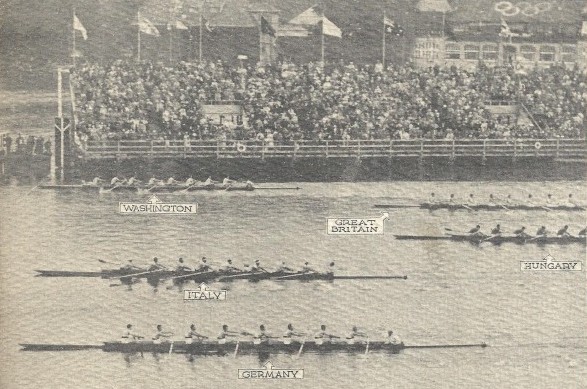
By David Eskenazi and Steve Rudman
A University of Washington athlete first represented the United States in the Olympic Games in 1920 (the same year Husky Stadium was constructed) when discus thrower Augustus (Gus) Pope captured a bronze medal at Antwerp, Belgium, with a throw of 138-2 ½.
Two subsequent Huskies, senior high hurdler Steve Anderson and shot putter Herman Brix, later a Hollywood movie star in the Edgar Rice Burroughs Tarzan films, scored silver medals eight years later at the 1928 Games in Amsterdam.
Not until 1936 — 75 years ago this month in Berlin did a UW athlete collect a gold medal, and that year 11 of them collaborated on a bonanza 13 medals, including 11 gold and two silver.
Nine of the gold medals, actually representing one team gold, went to the eight UW rowers and one coxswain who occupied Washingtons victorious eight-oared shell. All-America swimmer Jack Medica took another gold (and two silvers), and Ralph Bishop collected the final gold for his participation with the U.S. Olympic Basketball team.
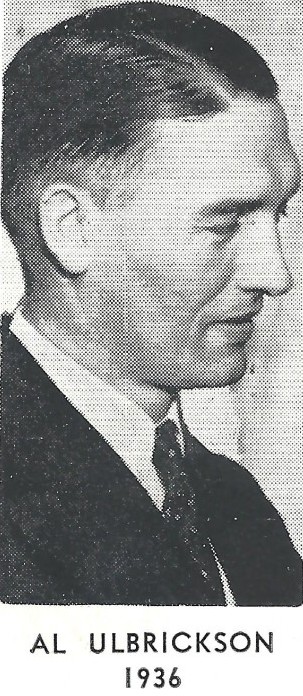
In the 75 years since the Nazi Olympics, Washingtons 1936 eight-oared shell has assumed iconic status, in part due to the manner in which the Huskies won, and in part because it marked the first international victory by a team from Seattle. The political climate of the day added to the lore of UW’s achievement, mainly owing to the mustachioed maniac watching the race.
Adolf Hitler did not want the 1936 Olympics. According to all accounts, Hitler detested modern sports because they promoted (at least in theory) the idea that race, politics and religion should not matter on the playing field, which, of course, ran contrary to Hitlers cockeyed belief in Aryan supremacy.
Left to Hitler, the Games never would have been held in Berlin, but they had been awarded before Hitler assumed power. With Hitler threatening his neighbors, the International Olympic Committee would have removed the Games from Berlin if it could have, but the IOC determined that might make political matters worse. So Hitler and the IOC were stuck with each other.
Hitler henchman and Nazi minister of propaganda Joseph Goebbels persuaded Hitler, three years away from invading Poland, that he should use the Games as a showpiece for the Nazi government and its notion of Aryan superiority. But as it developed, the most successful athlete to emerge in Berlin was, to Hitlers consternation, African-American sprinter and long jumper Jesse Owens, who won four gold medals.
The 1936 Olympics featured several firsts. They were the first to be broadcast on television (25 television view rooms were set up throughout Berlin and Potsdam, allowing locals to follow the Games free of charge). They were the first to include a torch relay (created to serve as a link between the ancient and modern Olympics), and the first to present basketball, canoeing and handball.
The 1936 University of Washington eight consisted entirely of Washingtonians, none of whom had ever stepped inside a racing shell prior to enrolling in school. But they developed quickly.
With Roger Morris in the bow seat, the Al Ulbrickson-coached crew won every race it entered, including the Pacific Coast Championships, International Rowing Association Regatta in Poughkeepsie, NY., and the National Sprints at Princeton.
Washington earned the right to represent the U.S. in Berlin by scoring a 1 1/4-length victory over Pennsylvania at the Olympic Trials, after which the crew spent as much time raising money to fund its trip to Europe as it did practicing on Lake Washington.
Heading to the Games, the UW eight aimed to become the fourth collegiate crew, following Navy in 1920 (Antwerp), Yale in 1924 (Paris) and California in 1928 (Amsterdam) and 1932 (Los Angeles) to win an Olympic gold medal.
Seventeen crews made up the 1936 Olympic rowing field, including Germany, everyones favorite. But during preliminaries, rowing in the Husky Clipper, a shell designed by famed boat builder George Pocock, the UW announced itself by establishing a world record for 2,000 meters (the Olympic distance), clocking 6:00.8 over the Lake Grunau course.
Germany drew Lane 1 for the gold-medal race and Washington was assigned Lane 6, which had rougher water (and more wind). With the locals chanting Deutschland! Deutschland!, Germany burst to the lead, followed closely by Italy. UW got off to an uncharacteristically poor start and trailed the field by open water at the 1,000-meter mark.
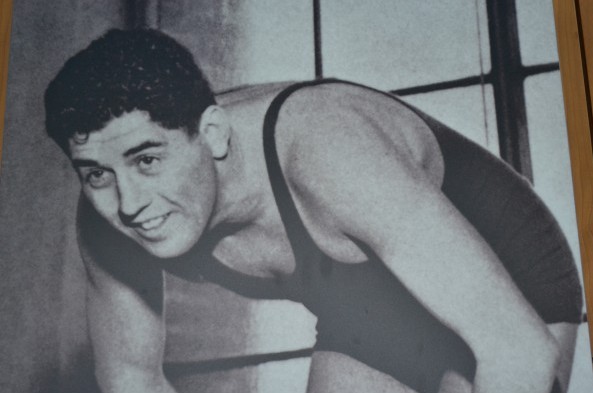
UW coxswain Bob Moch called for a higher stroke rate, but stroke Don Hume, who had taken ill after arriving in Berlin, failed to respond. According to an account provided by Ulbrickson, Moch was about to ask Joe Rantz, stationed in the No. 7 seat and the closest man to Moch, to set the stroke rate. Then Hume suddenly got his bearings.
The Huskies closed to within a length with 600 meters remaining and then picked up the pace again. Reaching 44 strokes a minute, the Huskies passed Britain, Switzerland and Hungary.
Then, with about five strokes left, Washington whizzed past the Italians and Germans for the gold (margin of victory was a length and a quarter in a time of 6:25.4), infuriating Hitler, who fumed over the outcome from a boathouse balcony.
The gold-medal crew included consisted of Morris (bow), Charles Day (2), Gordon B. Adam (3), John G. White (4), James B. McMillin (5), George E. Hunt (6), Rantz (7), Hume (8) and Moch (cox).
Said Ulbrickson: The boys won that race on courage. I thought (Don) Hume was going to collapse in the last 100 meters when they lifted the beat to 40. Where he got the stuff to finish the way he did Ill never know. It was a magnificent performance.
I know it didnt make Hitler very happy, Morris told the Seattle Post-Intelligencers Dan Raley years later. But we werent there to make him happy.
The UW eight collected its medals on Aug. 14, two days after swimmer Jack Medica won the 400-meter freestyle — but only after a tremendous duel with Japanese champion Shunpei Uto.
Medica attended Lincoln High School which, before it closed in 1981, produced an array of notable alums, including basketball-baseball star Sammy White, pro football Hall of Fame coach Don Coryell, former Mercer Island basketball coach Ed Pepple, Northwest amateur golf star Harry Givan, 1962 Worlds Fair chairman Eddie Carlson (whose napkin sketch inspired the Space Needle), singer-actress-dancer Dorothy Provine, and Norma Zimmer, the Champagne Lady from the long-running Lawrence Welk Show.
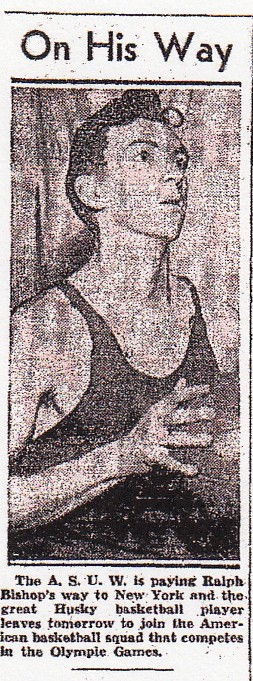
Lincoln High also produced the only swimmer in Washington state history more prominent than Medica Helene Madison, a 1931 graduate who won three gold medals at the 1932 Los Angeles Olympics and set 117 world records during a career that made her the states first inductee into the U.S. Olympic Hall of Fame.
Medica followed Madison at Lincoln by a year, and as a senior in 1932 was asked by coach Ray Daughters, who had coached Madison, to train with the American 800-meter relay team in advance of that summers Olympics, which Madison dominated.
Medica emerged into national prominence at the University of Washington, where he was literally a one-man swimming team. During Medicas tenure (1933-36), no one ever beat him in any race.
Medica won nine NCAA championships, including the 220, 440 and 1,500-meter freestyle races three years in a row (1934-36). Medicas nine titles stood as the NCAA record for 41 years (not broken until 1977).
Two coaches had a great influence on Medicas development as a world-class swimmer. At Washington, Jack Torney, later to become the father of Washington state high school swimming, instructed him. At the Washington Athletic Club, Medica swam for Daughters, who coached WAC swimmers to 30 world records, 301 American records, and 64 national championships (Daughters also coached the U.S. Olympic Team in four consecutive Games: 1936, 1948, 1952, and 1956 (Berlin, London, Helsinki and Melbourne).
By the time Medica graduated, he set 11 world records in various strokes from 220 yards to one mile. In addition to his nine NCAA titles, Medica won 17 national AAU titles (Medica won at least four and sometimes five AAU crowns each year from 1933-36).
Among his notable wins: Medica took the AAU National Outdoor Championships in the 440-yard and 880-yard freestyle in 1933 and 1934. He was the one-mile champion in 1934, and won the 220-yard freestyle in the AAU National Indoor Championship in 1935 and 1936.
Medicas 1935 200-meter freestyle record went unbroken for nine years. His 400-meter freestyle record, set in 1934, stood for seven. In a sport of frequent record breaking, the length of time for which Medicas records stood provides stunning evidence of the stature of his performances.
In fact, so gifted was Medica that one year (1936) he received a varsity letter from the University of Michigan. At the 1936 NCAA Championships, Medica took enough points away from Yale and Iowa that the Wolverines were able to win the team championship. Grateful Michigan coach Matt Mann sent Medica a letter sweater as a way of thanking him.
He doesnt have a team at Washington, said Mann, and he sure swam well for Michigan, so I sent him a letter sweater.
In the Olympic 400 meters, a race won by American Buster Crabbe (Crabbe became a prominent film star and is the only actor to play Tarzan, Flash Gordon and Buck Rogers, the top three comic-strip heroes of the 1930s) four years earlier, Medica quickly fell behind Uto. But Medica fought back and narrowed the lead. A spurt by the Japanese swimmer pushed him further ahead, but his exertion took much out of him, and Medica responded. Medica and Uto battled for gold in the final 50 meters with the American taking the lead with only 10 meters remaining.
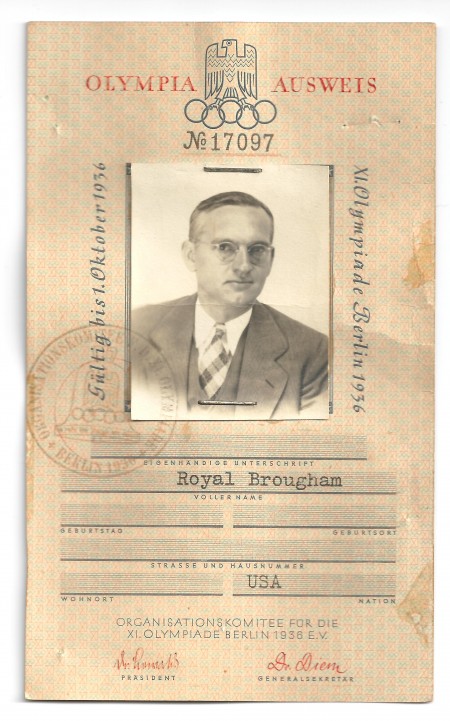
Medica, the world record holder in the event entering the Games (4:38.7), clocked an Olympic record 4:44.5. One day after setting that Olympic record, Medica added a silver medal in the 1,500-meter freestyle, and departed the Games with three medals (he had won a silver in the 4x-200 freestyle relay on Aug. 11).
On the same day (Aug. 14) that Medica captured the 400, Ralph Bishop became the first (and still the only) UW basketball player to win an Olympic gold medal.
Recruited by Hec Edmundson, Bishop entered the University of Washington in the fall of 1933 after having spent a year at Yakima Valley Junior College. In the winter of 1934, as a sophomore, he chased regular center Clyde Wagner to the bench and became a fixture in the Husky lineup.
Bishop stood anywhere from 6-4 to 6-6 (accounts differ) and sports writers frequently referred to him as an elongated forward, although he often played center. Bishop couldnt jump as well as many of the players he faced, and didnt have great upper body strength. But he had long arms (action photographs show that he could get his hand above the rim), great timing (which helped his rebounding) and better stamina, important in Edmundsons fast-break offense.
The Huskies prospered with the junior college transfer. In Bishops three years, Washington went 20-5, 16-8 and 25-7. Bishop captained Edmundsons 1935-36 club, and made first-team All-Pacific Coast Conference that season, along with guard Bob Egge, also named All-America.
Due in part to the intense lobbying of legendary Kansas coach Phog Allen, the International Olympic Committee finally included basketball as a medal sport for the Berlin Games. To determine the U.S. roster, eight teams, all of which had survived a regional qualifying tournament, assembled in New York Citys Madison Square Garden in early April for the Olympic Trials finals.
The field included five college teams, one YMCA club and two Amateur Athletic Union squads. Washington had earned a tournament berth by defeating USC 41-27 and Oregon State 35-29 at the Olympic Trials Regional Semifinals in Seattle on March 25-26.
At Madison Square Garden, Washington defeated DePaul 54-33 in the first round, but lost to one of the AAU teams, McPherson Globe Oilers, 48-30, in the second round. McPherson ultimately lost to the other AAU team, Universal Pictures (from Hollywood), in the final.
By winning the tournament, Universal earned the right to fill half of the 14-man Olympic roster (seven players). McPherson supplied six players. By finishing third Washington defeated Wilmerding, PA., the YMCA team, 49-33 the Huskies were allowed to add the 14th player. Bishop, UWs Most Inspirational Player during the 1935-36 collegiate season, received the nod over teammates Egge, Ed Loverich and Chuck Wagner, who became alternates. At 20 years, 312 days, Bishop was the youngest player on the U.S. team (when the Games began).
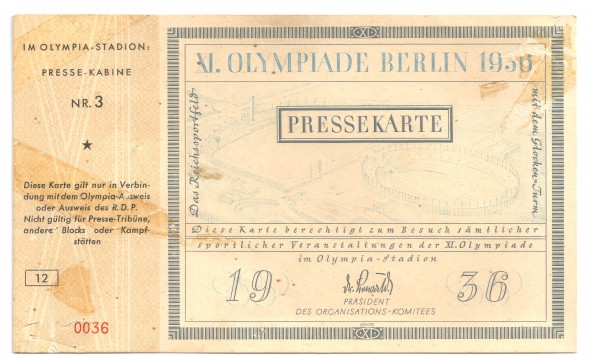
Bishop and U.S. Olympic basketball team set sail for Europe in July on the S.S. Manhattan, accompanied by James Naismith, then 74 years old, who was scheduled to be honored during the Games for having invented the sport 45 years earlier (en route to the Games, Bishop won the U.S. Olympic teams ping-pong tournament).
“We had hoped to display to sports fans of other countries the skills, the science and the speed of this native American game, Sam Balter, a member of the U. S. basketball team and a former star at UCLA, told Sports Illustrated. Instead, a comedy of errors and unfortunate circumstances combined to make a sandlot affair of what should have been the greatest basketball tournament ever.”
When Naismith arrived in Berlin, he ran into a credential snafu that denied him entrance to the Games. Naismith then discovered that no ceremony had been arranged to honor him. U.S. officials had to scramble to set things straight. The U.S. team subsequently discovered that the International Basketball Federation, fearful that the Americans would dominate the tournament, wanted to ban all players taller than 6-3, which included Bishop.
The U.S. objected, and prevailed in the ensuing debate over height restrictions, but the IBF instituted a new one mandating that no team could have more than seven players active for any game. As a consequence, the U.S. decided it would use seven players from the Universal Pictures AAU team in its first game and the six McPherson Oilers players plus Bishop in the second game.
The U.S. began with a 2-0 forfeit victory over Spain, whose team had been called home because of the start of the Spanish Civil War. The Universal players trounced Estonia 52-28 in the second round, and the McPherson platoon followed with a 56-23 victory over the Philippines (Bishop did not score).
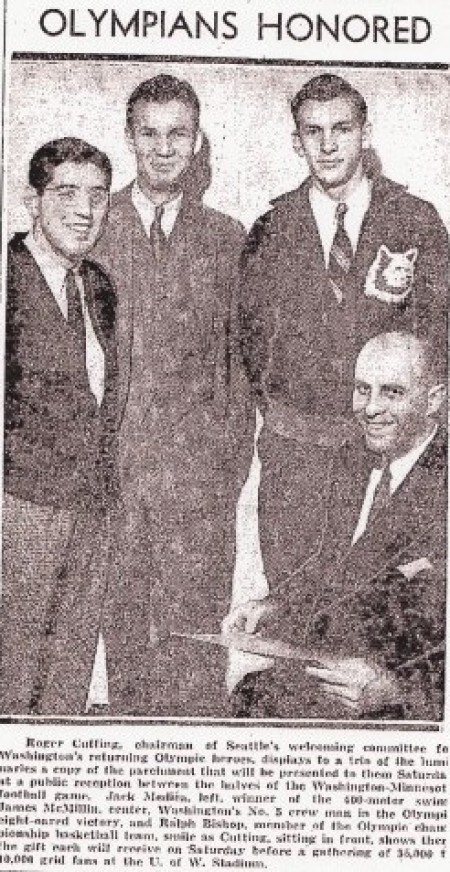
A 25-10 U.S. triumph over Mexico in the semifinals set up the Americans for a gold-medal encounter with Canada (Naismith’s home country). U.S. head coach Jim Needles, a Tacoma native and also coach of the Universal Pictures AAU team, selected a final-round squad of Francis Johnson, Joe Fortenberry, Jack Ragland and Bill Wheatley from McPherson, Carl Knowles and Carl Shy from Universal, and Bishop.
On Aug. 14, 1936, the U.S. beat Canada 19-8 to win the gold medal. The game tipped off on an outdoor court made of dirt and clay and was played in such a downpour that the New York Times described conditions as a sea of mud. Players found simple passes and close shots difficult, dribbling nearly impossible. The Washington Post remarked that the game might better have been played under water polo rules. About 1,000 people stood to watch (there were no seats).
Not all of the players who represented the United States received gold medals. Only the seven selected for the gold-medal game collected hardware. Since the coaches picked Bishop for the final game, he got a gold (Bishop scored four points in the Olympics, all against Mexico).
Bishop vanished into the relative obscurity of AAU basketball following the Olympics. He played for a team sponsored by Safeway the year after the Berlin Games, then became associated with Globe Refining. Bishop also had a fling with the first incarnation of the Denver Nuggets (1948-49) before retiring. Bishop died on Oct. 1, 1974, at his home in Santa Clara, CA.
Members of Washingtons 1936 gold-medal crew entered the National Rowing Foundation Hall of Fame in 1971. In 1979, the crew became the first team inducted into the newly formed Husky Hall of Fame.
Four of the rowers lived into their 90s. Roger Morris, who manned the bow position, was the last to go, dying in 2009 at age 94 at his home in Maple Valley after a long career as an engineer. Like Medica, Morris attended Lincoln High School.
Following the 1936 Games, Medica competed internationally in China, Japan, New Zealand, Cuba, the Philippines and Europe. When World War II broke out, he taught water survival for the Navy after poor vision kept him from serving directly.
Medica coached at Columbia for two years, then joined the coaching staff at the University of Pennsylvania. He became Penns head coach in 1944 and remained in that job until 1958. He continued to teach physical education until his retirement in 1976, at which point he returned to the West.
Medica entered the International Swimming Hall of Fame in 1966 and the Husky Hall of Fame in 1981. He died on April 15, 1985, in Carson City, NV.
———————————————-
Check out David Eskenazis Wayback Machine Archive. David can be reached at (206) 441-1900, or at seattlesportshistory@gmail.com

4 Comments
henchmen, mustachioed maniac, “Hitler detested modern sports, Washington won “much to the consternation of…, etc How do you know that, you read Hitler’s mind? Pouring it on a bit thick, don’t you think?
You know, folks are getting wise to the hype and propaganda that has been dumped on them for so long. Getting tired of it, in fact. This piece would have been much more a better read if you could just have written it straight. I mean, shame on you for using these athletes, who are hero’s, as a way to air some kind of animosity or vendetta of your own
Hold on…are you actually defending Hitler? If you do a Google search for Oakwood_99, there are some creepy results on some creepy sites, including one that says your mission is to go against news media and blogs that “promote falsehoods.”
I have to say, I’ve seen a lot of bi-partisan arguing on news websites, but this is my first pro-Hitler sighting.
Go Lincoln!
Go Lincoln!